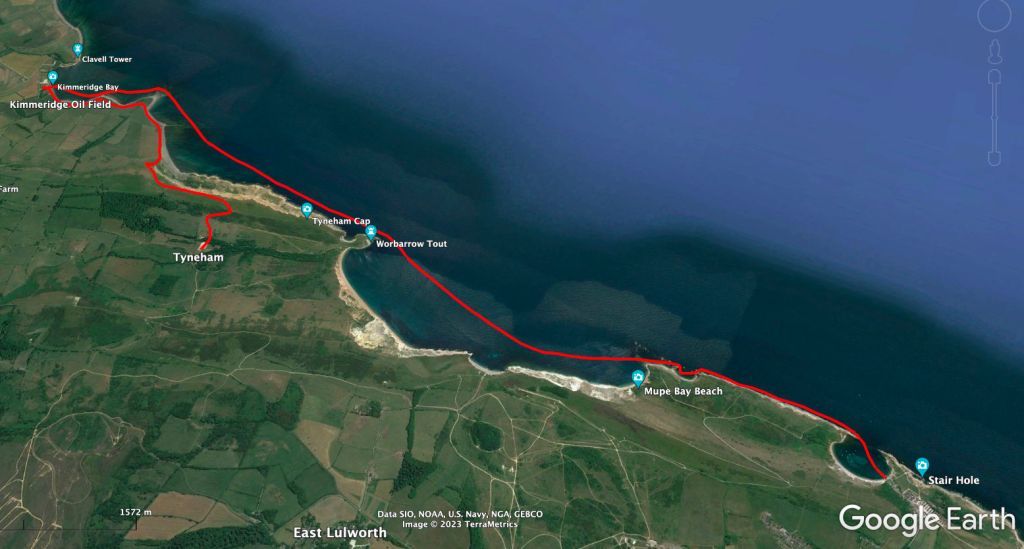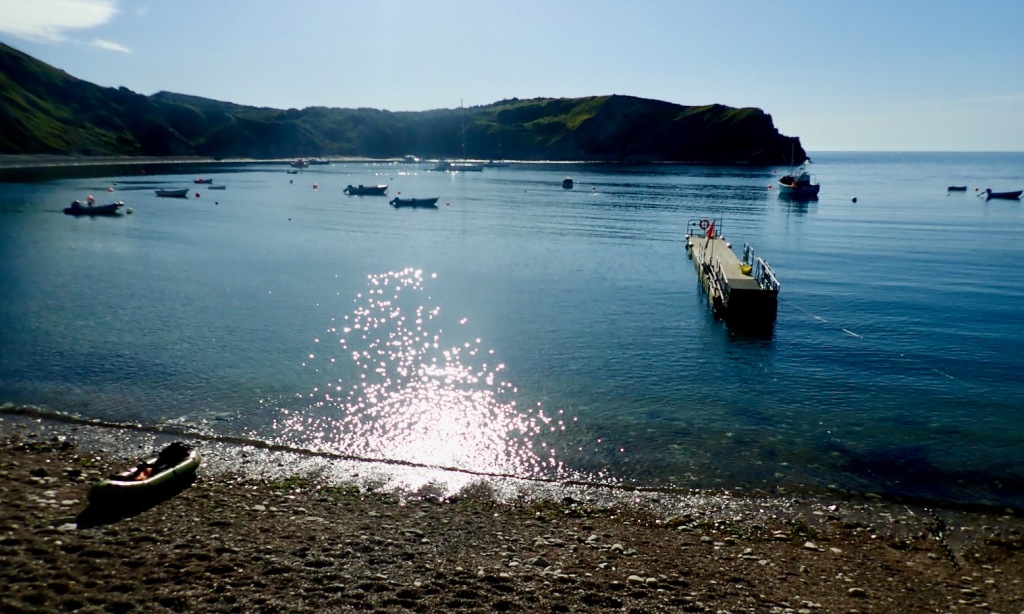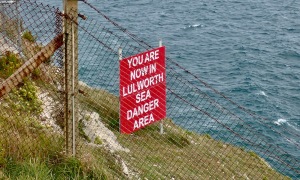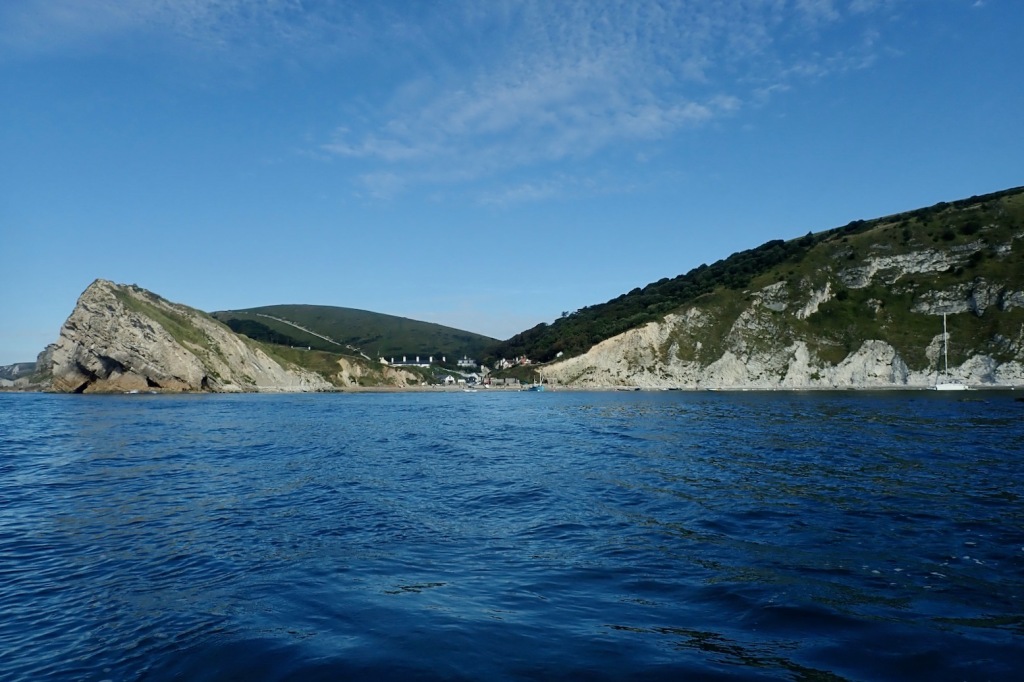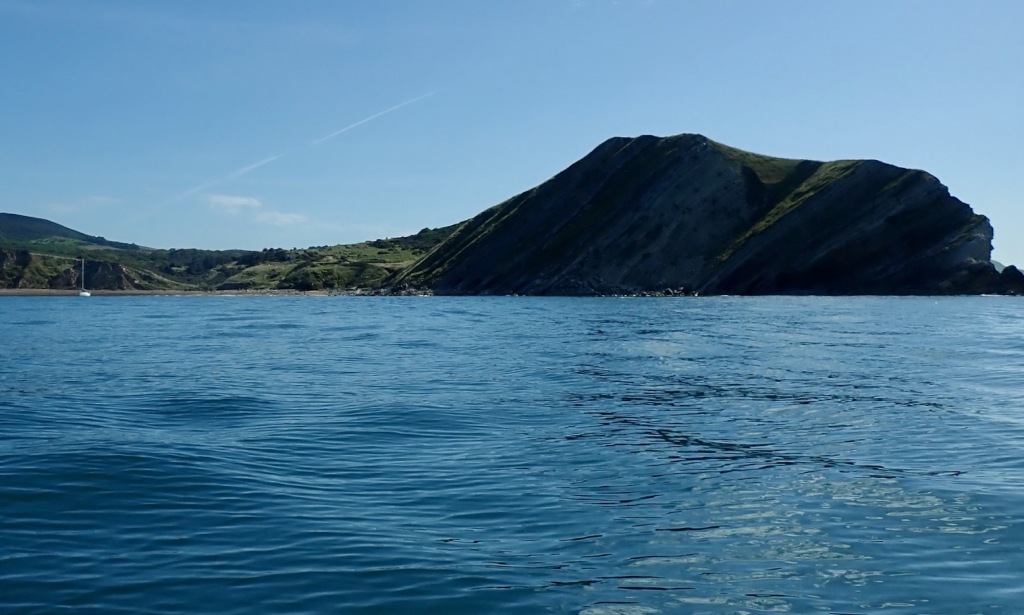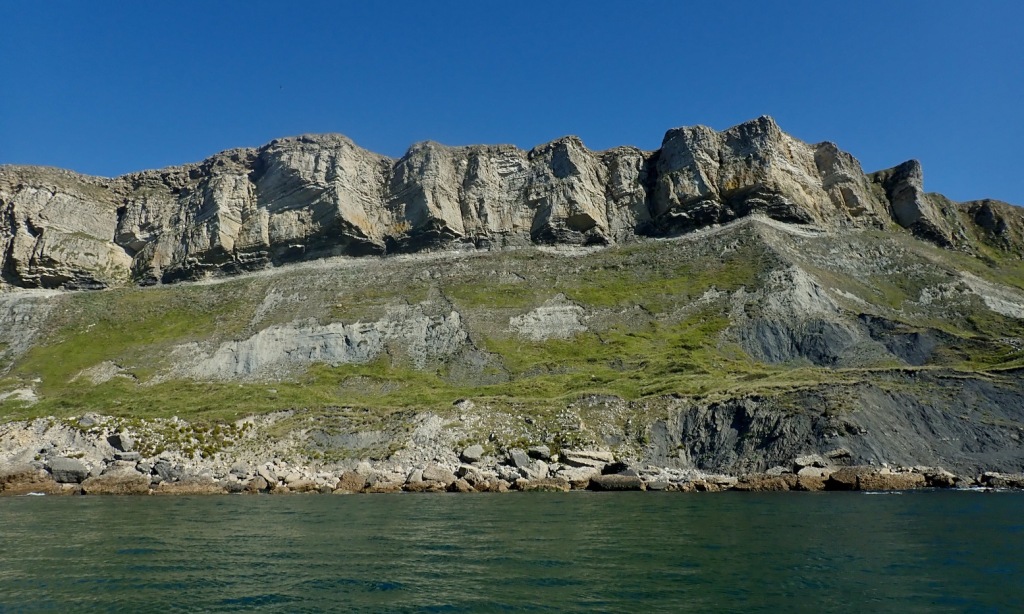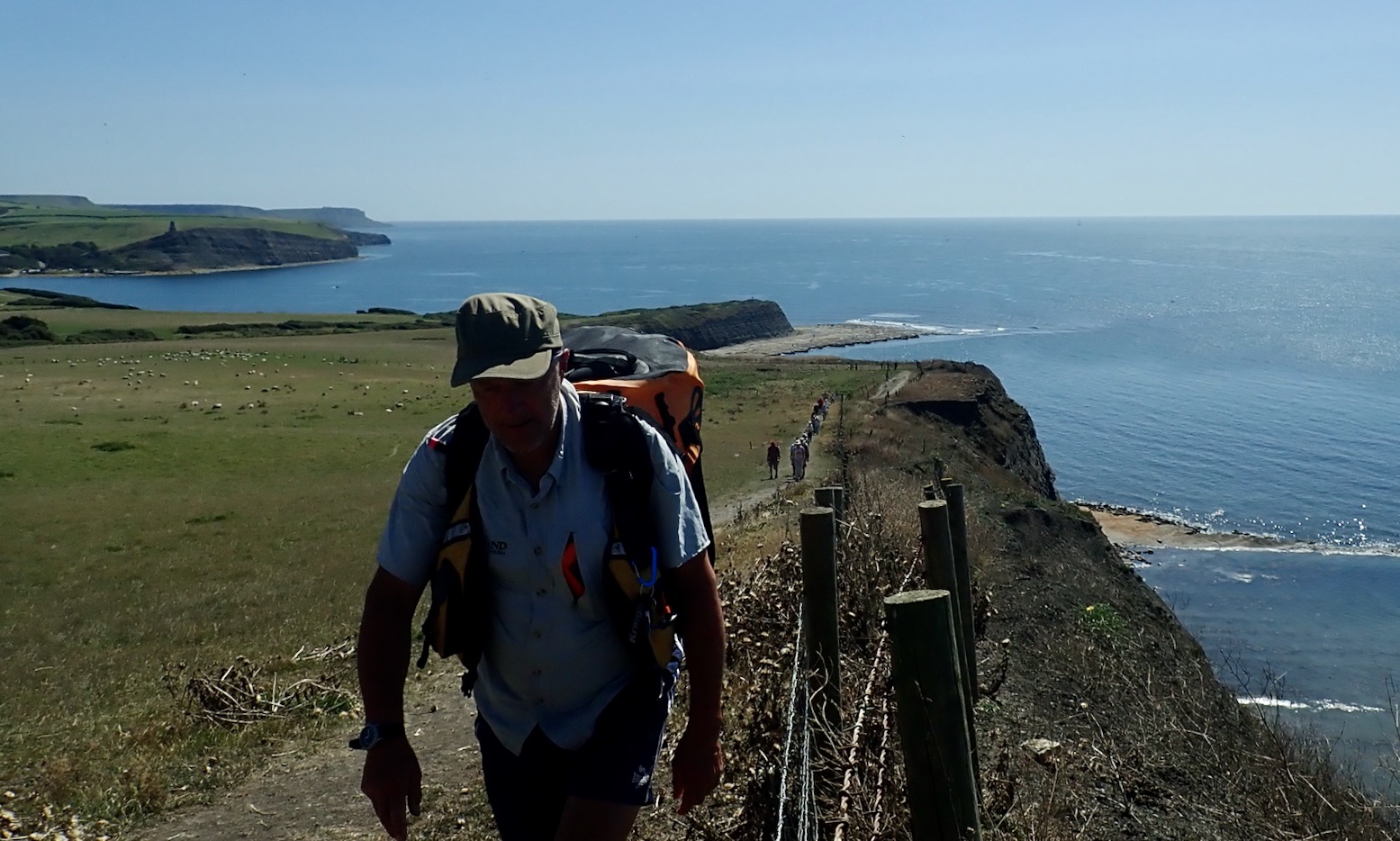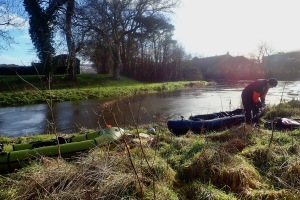Anfibio Sigma TXL+ main page
English South Coast Day Paddles
It’s less than two weeks to the autumnal equinox, but at nearly 33°C, today will be the hottest day of 2023 so far. It’s been over 30 for days now so you do wonder what it’s going to be like in 5 or 10 years time. More sea to paddle, that’s for sure.
Today there’s barely a breeze; a fine day for a 10-km paddle around Beachy Head and the chalk cliffs of the Seven Sisters to Cuckmere Haven before walking back. I’ve had this one on the list for years as an IK trip. Today is the day, but with a packraft.
It was Christmas Day, 2004 that I took my first ever IK for a tentative spin on the Cuckmere estuary and thought: shite, what have I done! The used Gumotex Safari was tippier than a one-legged stool and meandered more than the Cuckmere river itself. Luckily it was mostly the boat, not me. I soon swapped it for a Gumo Sunny and never looked back.
No worries about stability today. In the intervening decades packrafting got popularised and I’m trying out my new Anfibio TXL+, the length and width of a patio door.

Down in Eastbourne the forecast was a moderate 25, but at 8.30am it felt like that temperature already.

I cheat by putting in at the westernmost end of Eastbourne, a south coast town associated with genteel retirement homes. A neap tide is two hours into its ebb and light easterly winds were following it.

Looking for possible traps, I found a 15-year old kayaking report with pics of offshore breaking waves. I study a marine chart and am none the wiser, but realise that, like the Jurassic Coast, submarine ledges (or wave-cut platforms as I recall from geography) are a fairly normal thing off the South Coast, and breakers will move in and out depending on tide heights and the wind.

As I put in a swimmer bobbed up from the depths and asked:
‘Is that one of them Blowie things?’
I’d not heard this expression outside of the fly-ridden Outback.
”ow much do they cost, then?’
I delivered the fatal, four-figure Euro-sum. He dipped back down and slinked away like a seal. Another paddleboarder is born.
Initially the TXL+ feels dog slow – an unseen back eddy off Beachy Head? I now know it will pass so I keep going.
It’s unbroken cliffs all the way to Cuckmere with one exit halfway at Birling Gap where a staircase climbs up from the shingle to a car park and cafe. I can take out there, and if I’m knackered at Cuckmere, there’s the scenic bus 12 every 15 mins from nearby Exceat. There’s also an option to carry on all the way to Land’s End then ride the back of a whale to the Azores.

Sea kayakers coming in. They don’t have to carefully plot trips around tides and winds and bus routes.

As I round the corner towards Beachy Head the impression of speed picks up as I join the westward stream. Up ahead the lighthouse, but before it some breaking waves on Head Ledge. White breaking surf is easy to see on a day like this, but you still need to keep your eyes left for bigger swells which rise up out of the blue.

The children’s book outline of Beachy Head lighthouse alongside the highest chalk cliffs in Britain (162m; 530′). I gave up trying to find taller chalk sea cliffs anywhere in the world.

Round the corner I pull in for a yellow-label sandwich. Something about the sunshine, warmth and the gleaming white rock makes the way ahead less intimidating. I remember feeling the same in tropical Australia in much less calm conditions.

An overhead paraglider eyes up my seafood and florentine wholemeal bap and prepares to swoop.
Who remembers the 1968 film, Chitty Chitty Bang Bang? The magic car’s first airborne sortie is at Beachy Head and its distinctive red lighthouse, though I see they spliced a bit of IoW Needles in there too. Did they really think people would let it slide and not contact their MPs?
And in Quadrophenia released a decade later, depressed Mod Jimmy decides to do a ‘Thelma & Louise’ and end it all on Beachy Head (as many sadly do in real life) while The Who sing ‘I’ve Had Enough’.

I remember reading in the 1970s that with ice axes and crampons, this soft but vertical chalk was good practice for ice climbing. No need for all that sub-freezing clobber.
On the geologically contiguous Isle of Wight, these Red Bull lightweights are top roping.

At the peak of the modest ebb and I hit 6.4kph and get a nosebleed.
I look back and say goodbye to Beachy Head lighthouse…

… before bidding bonjour to Belle Tout lighthouse up on the cliff top. It got decommissioned in 1904 after 80 years as it was too foggy too often up there. Beachy Head lighthouse nearer sea level replaced it. Apparently both mean the same thing: ‘fine headland’ (beau chef became ‘beachy’). You can learn so much from Wikipedia.
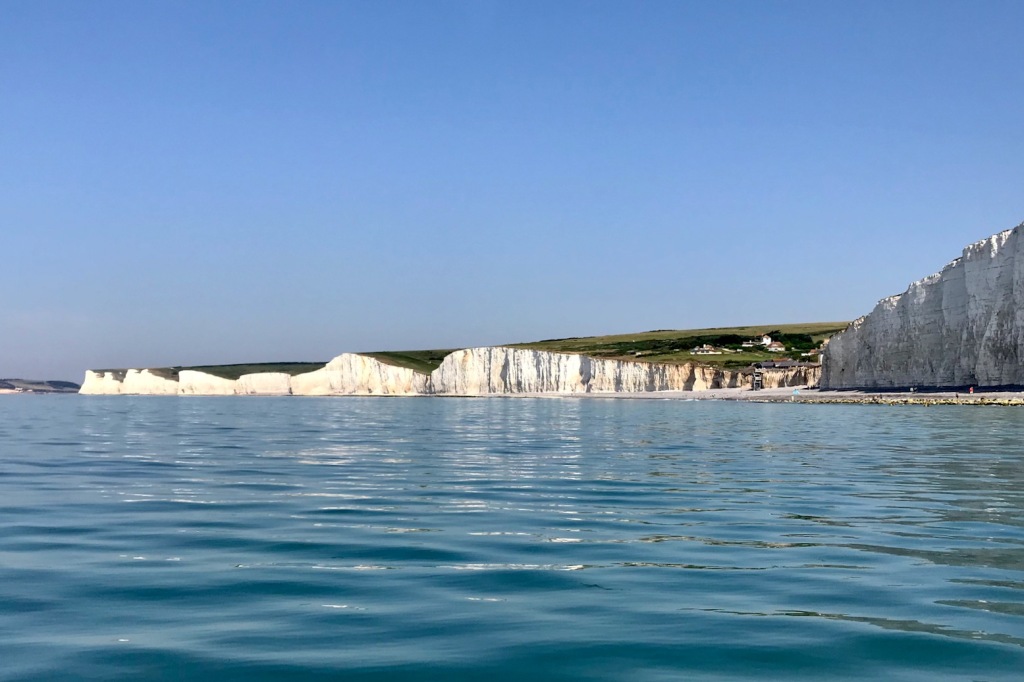
Sooner and with less effort than expected, I approach Birling Gap where there is road access. But first I have to paddle out around more deadly offshore breakers.
Beyond stretch the Seven Sisters to Cuckmere. Suddenly it all seems eminently doable.

Paddleboarders. Must be getting close to their lair at Cuckmere.

Heck, I even see one of those FDS IKs! Good to see one in actual use.

Strange buttress and cave formations appear. Would be fun to investigate out of Cuckmere or Birling one time.

At one point the TXL+ starts aquaplaning. I recognise this feeling so tighten the straps and respond in kind, doing the full torso pivot thing. I’m aiming for 7kph, but only hit 6 briefly with the waning ebb. Oh well, that must be the terminal hull speed of a dumpy TXL.

A flotilla of gulls patrol the entrance to Cuckmere Haven, as they have done since the Domesday Book was compiled.

In the warm backwinds my new Kokatat PFD has been much less sweaty than expected. It also has loads of pockets.
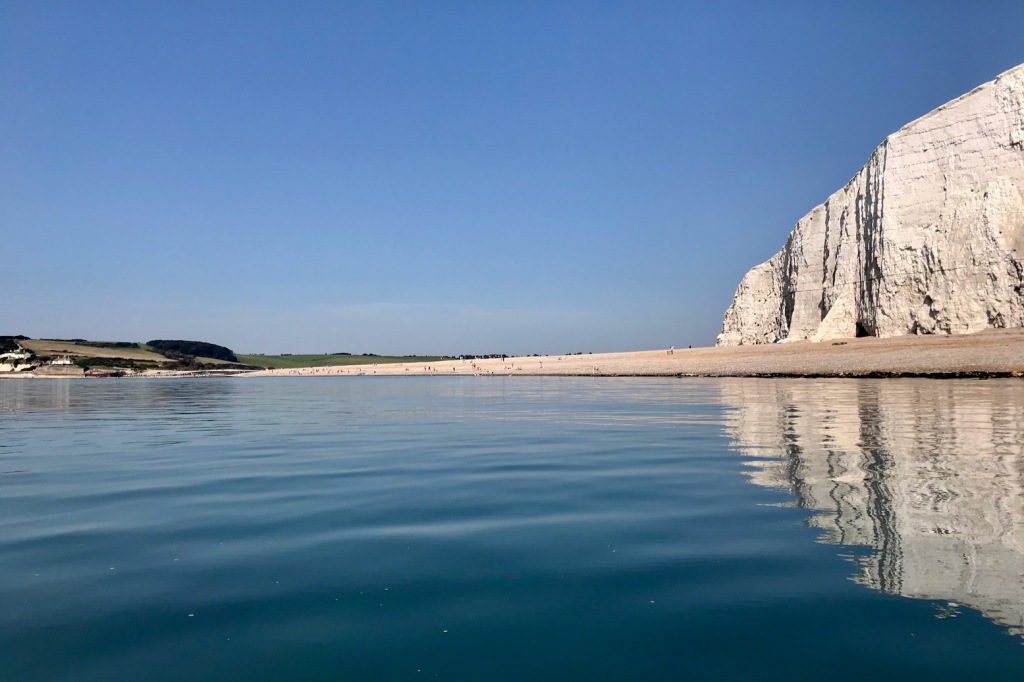
Cuckmere beach.

Before I get there I pull over and stagger around on seaweed-clad boulders for a bit.

And take one last sea level glimpse along the Seven Sisters. What an enjoyable paddle that was. Another long standing ‘WLTD’ ticked off, but in a packraft, not a nippy IK. I fail to find the river inlet which must have moved a bit since my GPS map was made.
I’ve got it in me, but it’s going to be a hot old slog back to Eastbourne.
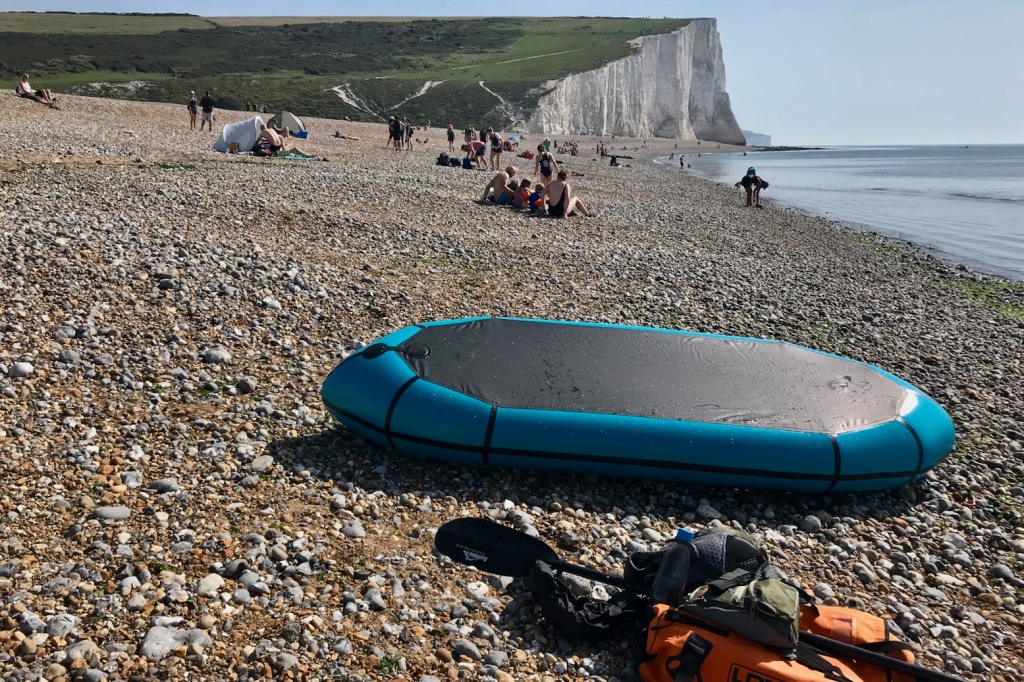
I flip the TXL+ and let it drain. An effortless 2.5 hours that took.

In the bag. Now for the hard bit.

What’s going on up there? Nothing much, just sunshine and enough space to enjoy it. Plus Taylor Swift handing out NFTs.
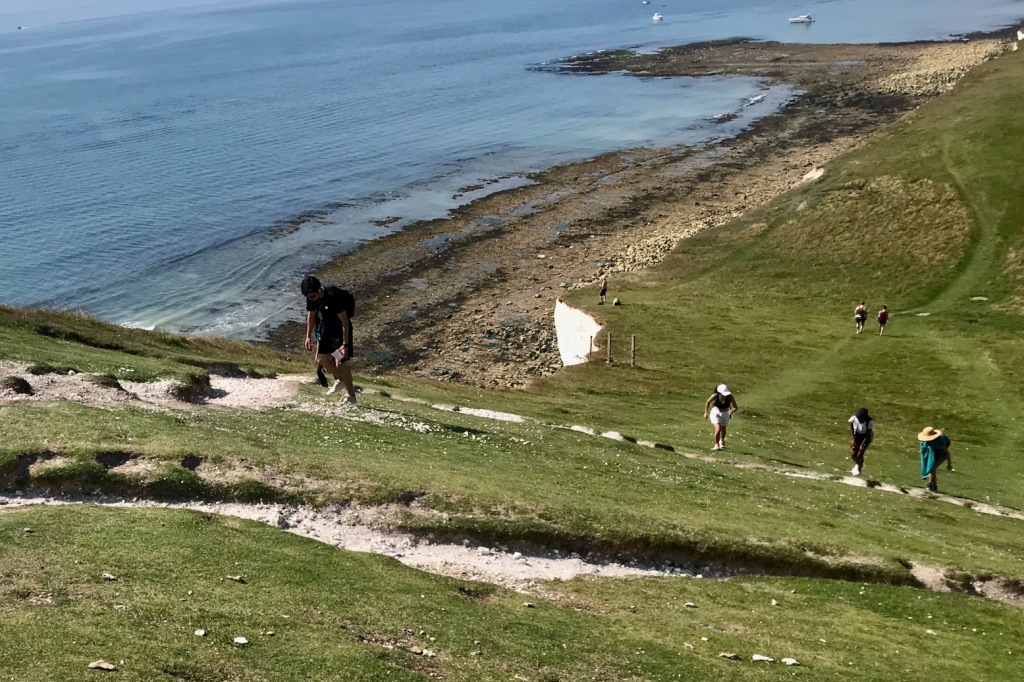
Seven Sisters means at least 7 brotherly ascents. It’s baking hot and I’ve got 500ml water left and dodgy knees, so for once I pace myself and use the paddle as a stick.
Up top you can see why this is such a popular walk; there’s loads of room to spread out on the vast expanse of magically trimmed grass with lovely sea views alongside.

Up on the cliffs it’s like some sort of diversity sponsored walk. I hear Spanish, Polish Urdu, Japanese, Estuarine, and what seems like a lot of first dates, judging by overheard chatter. I know no one’s carrying a packraft and all, but how do these fragrant young persons manage to not look like they’ve been dragged through a seaweed sauna by a JCB?

I make a mess of the toilets at Birling by indulging in a basin shower, but by Belle Tout lighthouse tout is not belle. I’m as parched as Pharaoh’s frog. Luckily there’s a smidgen of shade and a cafe selling reasonably overpriced ice lollies.

Local entrepreneurs have trained gulls to ride the thermals in search of dropped iPhones. Talking of them, this is the first time I’ve used a cheap cracked iPhone or any phone as a camera. The pics are pretty good, but you need two hands to hold and shoot, the lens is 28mm and any zooming soon gets ropey. As I walk into Eastbourne the battery is spent after only 130 shots and some mistaken video, but as a light day-camera I might get used to it.

Leaving Belle Tout with ice-chilled innards, it suddenly feels like it’s 5°C cooler. And the sight of stripey Beachy lighthouse suggests it’s not so far to go.

That was me down there not so long ago. The ice’s cooling effect doesn’t last, so after the long climb up to the 500-foot Beachy Head summit, I pull over for a cliffside rest which turns into a snooze.
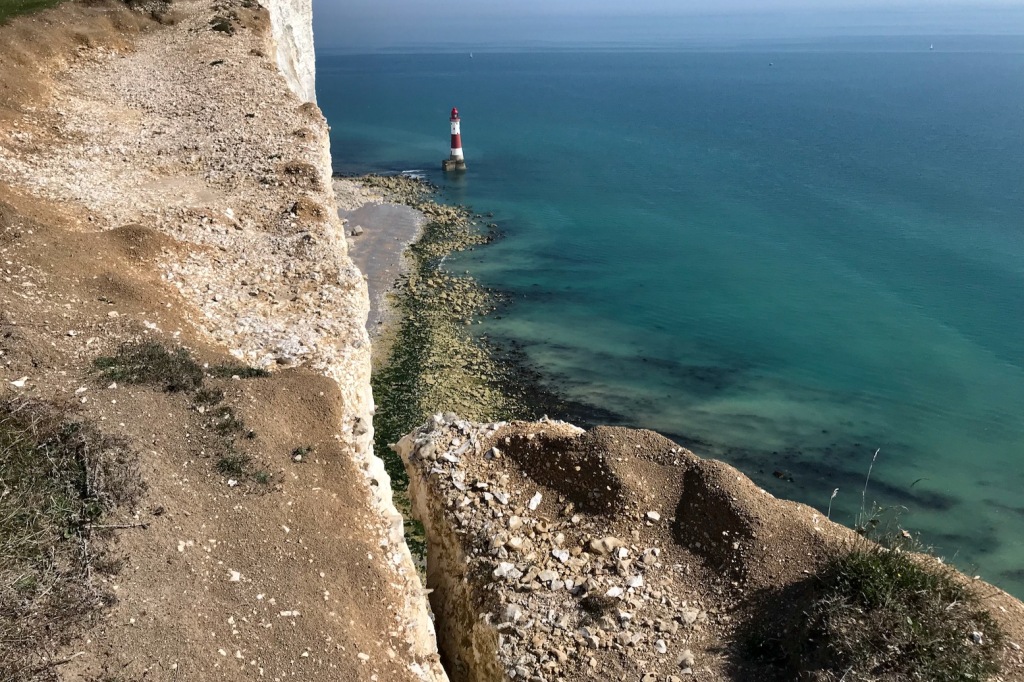
I wake up and the cliff edge is cracking. Guard ropes are intermittent, broken and much ignored. Much refreshed after my nap, a head breeze has kicked up and I’m now less of a dripping mess. Someone needs to write a new self help book ‘The Power of Resting’. Oh, they already did. This groundbreaking book takes a fresh look at the role that rest plays in the quality of your life, offering a proven program to enhance your health, help you look younger, and feel restored. The Power of Rest provides a low-cost, low-risk answer to … Give it a rest!

Eastbourne by George! But a steep, knee exploding descent lies just ahead.

Weary, lovelorn pilgrims make their way towards the finish line to collect their certificates.
‘Fancy getting a pizza later?’

Paddling Seven Sisters, highly recommended, whatever you got.


In case you ever doubted it, Float, Don’t Walk.




